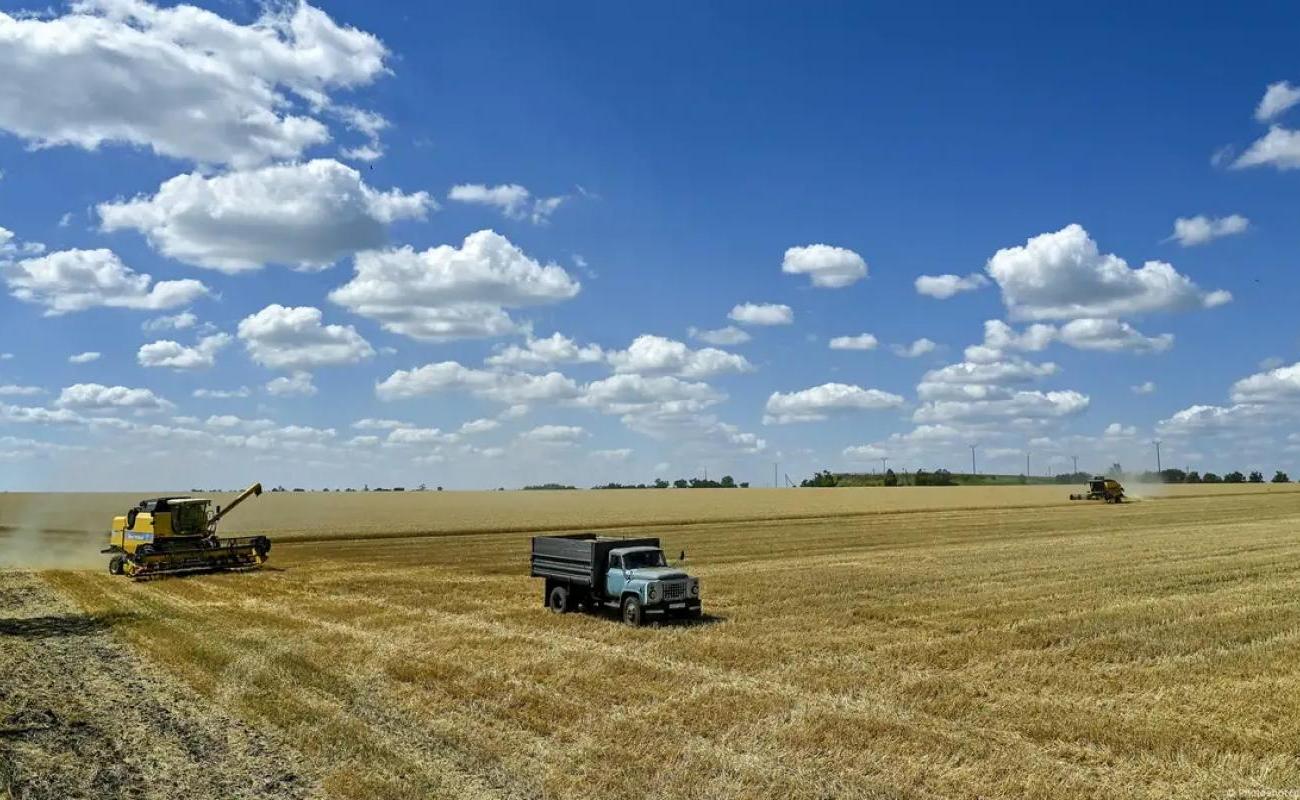Stolen Ukrainian grain

Harvesting in the occupied Ukrainian territories is becoming more and more important for Russian agriculture, and this grain is also exported. Ukrainian agricultural companies feel cheated and demand more pressure on Russia.
Ruslan Masurenko stands next to his grain warehouse in the Kyiv region. He is currently watching several tons of flaxseed being loaded onto a truck, ready for export to European countries.
The director of the Ukrainian agricultural company Harvest is satisfied with this year's harvest. "True, we had one very dry month, but we also plant many winter crops that do not require as much moisture," says Masurenko. His company farms 25,000 hectares of land in the Kyiv region – an area roughly the size of 35 football pitches. Most of the land is planted with corn and sunflower, but oilseed rape and wheat are also grown.
From Donetsk to Mariupol to Kiev
Masurenko is originally from Mariupol. But with the start of the Russian invasion in 2022, he and his company left the region in southeastern Ukraine. This was the second time they had to move – until 2014, they were based in Donetsk. The company owned 200,000 hectares of land there.
Today, these areas are administered by Russia, which occupies parts of eastern Ukraine. “It’s hard to describe the feelings. It’s so painful and incomprehensible,” says Masurenko. The fact that Russia now controls the arable land and trades in grain is nothing short of banditry, he adds.
"The thirteen million tons we lose annually"
Ukraine is called the "breadbasket of Europe". Grain is its number one export product - according to UN data, it accounted for 24 percent of all Ukrainian exports last year. Despite the war, Ukraine has managed to increase its exports again. According to the Ukrainian Ministry of Agriculture, in 2024, agricultural products worth almost 21 billion euros were exported. This has brought Ukraine back close to the level before the Russian invasion.
This was also possible thanks to the military successes of the Ukrainian Navy in the Black Sea, because this is the route through which most grain is shipped abroad. Russia blocked the Black Sea for a while with its navy, but Ukraine has reopened trade routes with its own naval drones.
Despite this, Ukraine still cannot access part of its agricultural areas, because Russia has occupied about 20 percent of Ukrainian territory. "If we compare the yields from 2021, that is, before the start of the active phase of the war, with today's, we see that we are losing 13 million tons per year," says Oleh Homenko of the Ukrainian Agricultural Association (UKAB). "That is quite a large amount compared to the total agricultural production."
Stolen grain increasingly important for Russia
This stolen grain from the occupied territories is clearly becoming increasingly important for Russian agriculture. According to the Russian Ministry of Agriculture, in 2024, the occupied regions of Luhansk, Donetsk, Kherson and Zaporizhia accounted for three percent of the total Russian grain harvest. Without these regions, the harvest would have been even weaker, as farmers in southern Russia suffered heavy losses due to bad weather.
This year, the Russian occupation authorities in Luhansk expect a harvest of about a million tons of grain - twice as much as last year. Some of it is planned to be exported abroad.
Ukrainian agricultural expert Oleh Khomenko believes that these figures are even underestimated: “In Luhansk and Donetsk, agriculture was very active and highly developed. The occupation authorities can manipulate facts and figures to avoid possible sanctions.”
Occasional contact with former colleagues
Masurenko's company Harvest had 1,200 employees before the Russian invasion. Today, only 250 of them remain. Some fled the country, while others remained in the occupied territories. "For some time we were in close contact with all the employees," he says.
But online communication doesn’t always work reliably. “Everything is civilized here, but the situation there is more complicated. Messenger apps are shutting down and it’s very difficult to communicate with colleagues.”
Masurenko doesn’t know who is currently cultivating the fields in the occupied territories, but he is sure that his company’s machines are being used. In the spring of 2022, he was still able to track the GPS signal. “Then I saw that our tractors were in the occupied territory. They were all moving towards Makeyevka, Horlivka – and towards Rostov and Taganrog in Russia.”
He is convinced: one day the fields in the occupied territories will be back under Ukrainian control. But until then, his company is focusing on farming in the Kiev region – although on a much smaller scale than before 2022.
Masurenko hopes that Ukraine’s allies will increase the pressure on Russia with additional sanctions.
